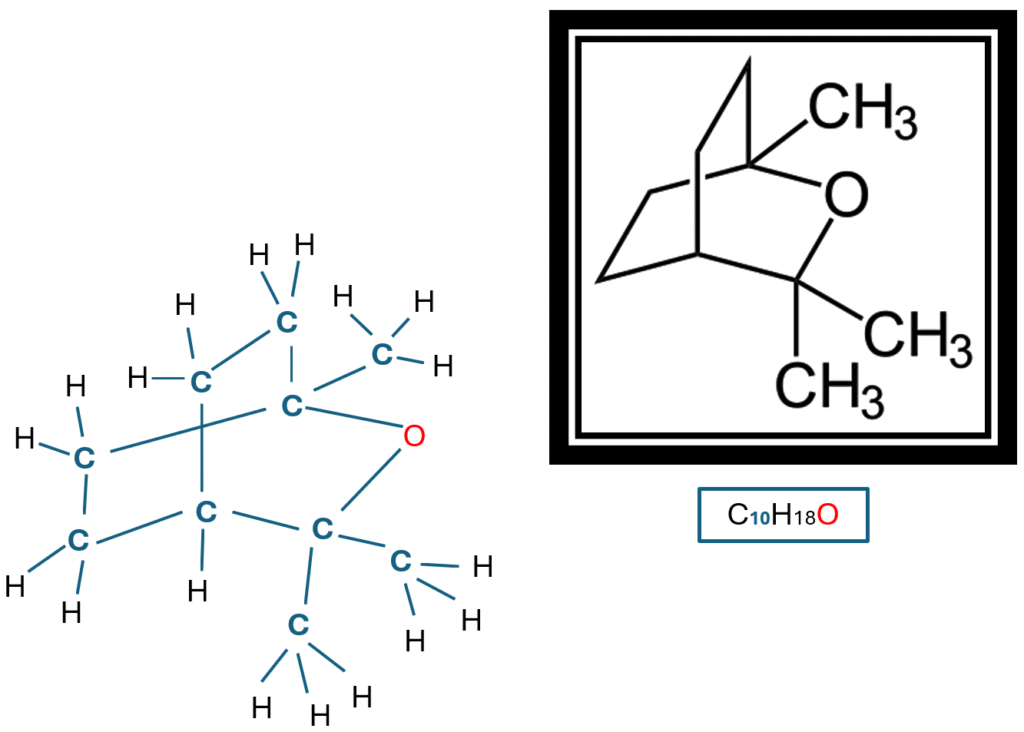This Terpene is responsible for the aromas emanated from Eucalyptus, Mint, Rosemary, Tea tree, Mugwort, Bay leaves, Sweet Basil, Sage, and certain marijuana strains. This organic compound was identified in 1870 by François Stanislas Cloez.
Its potent, refreshing but spicy aroma has been used in various industries and is often found in cosmetics, lotions, essential oil blends, and balms.

The function of Terpenes is to defend against external agents such as insects or other animals. These organisms detest the smells and flavors generated by terpenes, so they stay away from plants.
Eucalyptol Chemichal Structure
The molecular structure of Eucalyptol is a monoterpene. Monoterpenes are conjugations of 10 hydrocarbon atoms, due to the synergy of two isoprene units.
Its boiling point is 176°C (348.8F), and its colorless transparent liquid. Its insoluble in water, but soluble with ethanol (alcohol), chloroform, and other chemicals such as ether.
In marijuana plants, Eucalyptol is produced in the trichomes. Sativa varieties have the highest levels of this Terpene.

Eucalyptol Flavor and Aroma
Both aroma and flavor of this Terpene are quite minty, fresh and potent but also somewhat spicy.
Effects and Benefits of Eucalyptol
Eucalyptol is found primarily in sativa or sativa-dominant strains. Specifically, the presence of this terpene in sativas is 5%, while in indicas it is 1%. This means that the synergy of this terpene with THC is what causes the psychoactive stimulant effect in marijuana strains.








